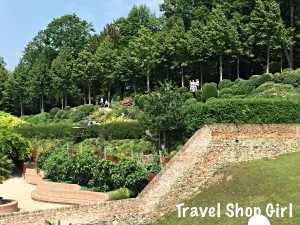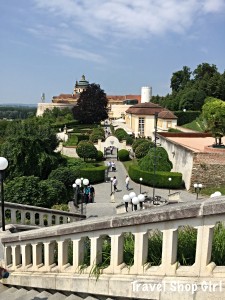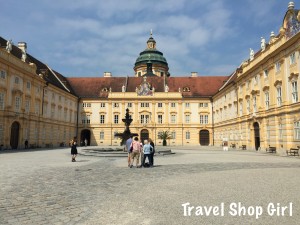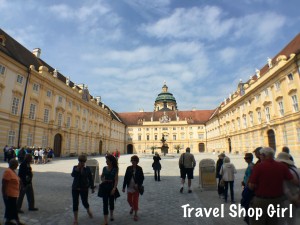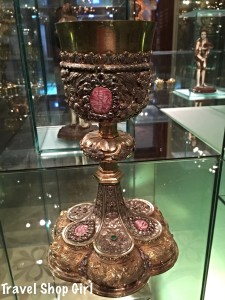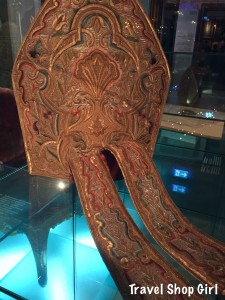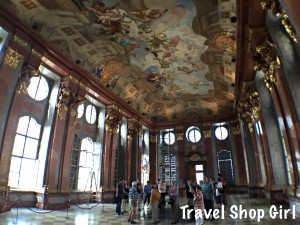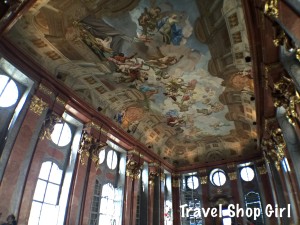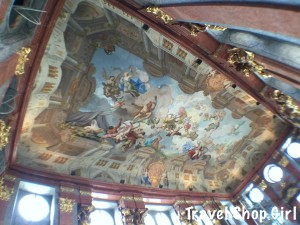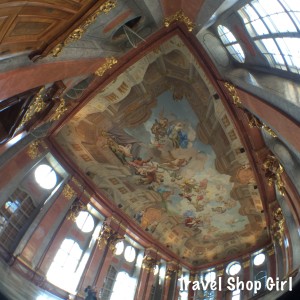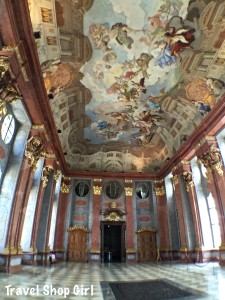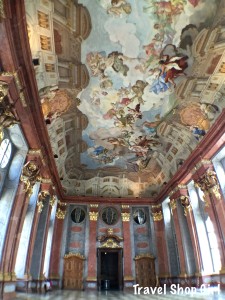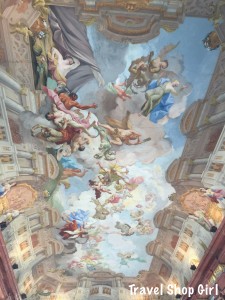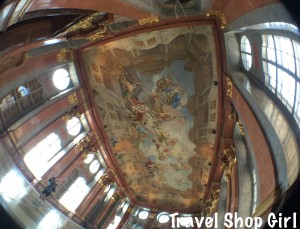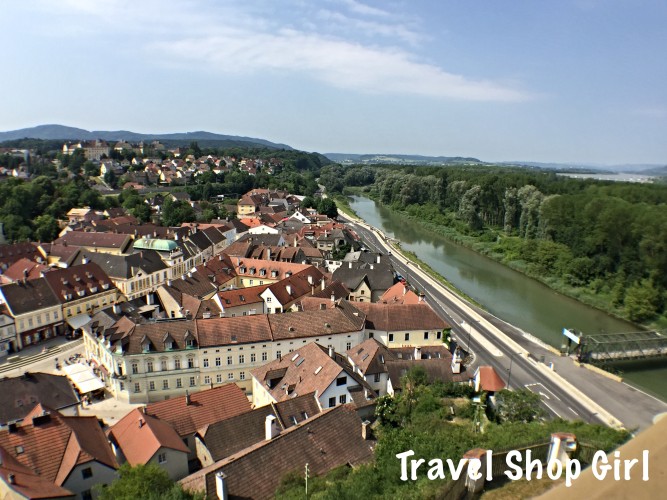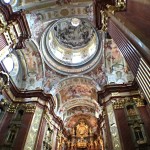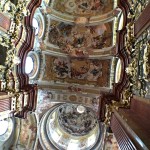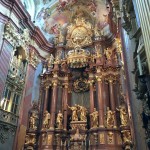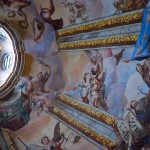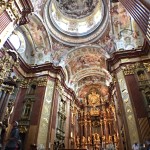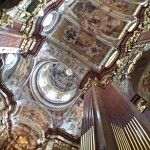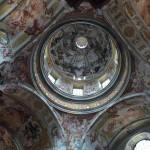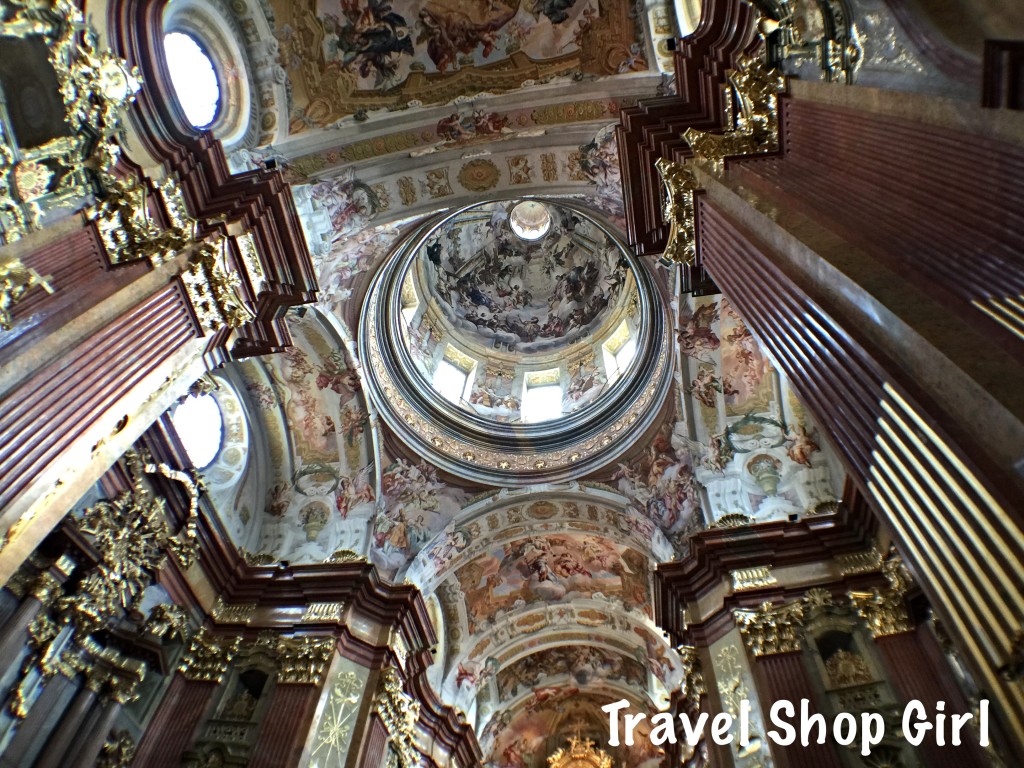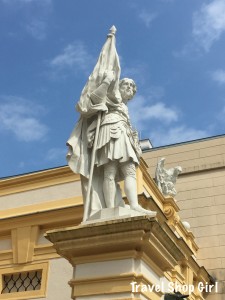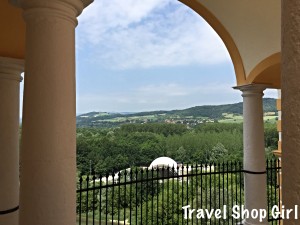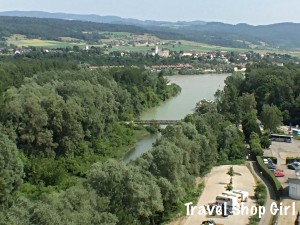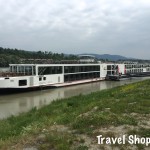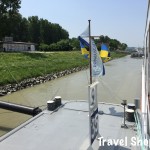
On our fifth day onboard Viking Atla, Karla and I were excited about our next port of call was Melk, Austria, another great city located on the Danube. As soon as we docked, I was anxious to visit the must see destination in Melk, Austria’s famous Melk Abbey. Although I really wanted to walk up to the 900-year-old baroque Abbey, I was told that was probably not the best idea. Since we would only be in Melk for about 4 hours and the walk was uphill and would definitely take more than a half hour, I opted to ride along with everyone else on the coach.
Perched high above the Danube on a cliff, Melk Abbey contains a wide variety of medieval manuscripts, frescoes, and beautiful views of its gardens and the surrounding Wachau Valley.
Jakob Prandtauer who trained as a stonemason and later became an Austrian Baroque architect, was the designer behind the Baroque Abbey built between 1702 and 1736. The abbey was a royal palace with ceremonial courts, guest apartments, grand halls and a library. Back in the 11th century, it was Leopold II of Babenberg who decided to turn the palace over to the Benedictine monks, who then decided to turn it into a fortified abbey.
The Prelate’s Courtyard is one of the seven courtyards around which the buildings of Melk Abbey surround.
TSG Tip: Melk Abbey was an incredible place to visit and photograph. I took many pictures, but had to cut the majority out for this post due to space. To see the pics I’ve included here, click on any picture and it will pop up so you can scroll through them. Wish I could’ve shared them all.
Museum Rooms: Inside the museum are a host of artifacts contained within 11 rooms including art, clothing, alters, and relics. These items are displayed in a way in which demonstrate the evolution of the Abbey. The current exhibition is called, “The Path from Yesterday to Today – Melk Abbey in its Past and Present.”
Marmorsaal (Marble Hall): This striking room has extremely high ceilings, red marble pilasters, and absolutely no furniture inside.
To say you feel so tiny and insignificant inside this room with its beautifully painted allegorical ceiling by Paul Troger overhead would be an understatement. Karla and I waited until we were the only ones in the room and then quickly laid down on the floors to take pics of the ceiling. Why? Because that’s what we do for art!
TSG Tip: Stand in the center of the room and take a close look at that curved ceiling. Is it really curved? Nope — it’s painted to look that way, like a domed ceiling.
The view overlooking Melk and the Wachau Valley from outside the Marble Hall is absolutely picturesque.
Stiftskirche: As you progress through the various sections of the Abbey, each building appears more striking than the last. But wait until enter Stiftskirche or “Abbey Church.” This opulent baroque church with its twin spires and high octagonal dome will leave you in speechless as you gaze in amazement of the craftsmanship required to construct such a church.
There’s so much too look at all around you, including the beautiful frescoes by Johann Michael Rottmayr, that you need to be careful not to hurt yourself while trying to take everything in. No spinning around allowed (ok I added that one in, but you get the idea).
Nothing makes me happier than a little something creepy like stumbling upon this glass sarcophagus with the skeleton of a catacomb saint inside. But not just any catacomb saint as this one is in something of a breakdancing or B-boying kind of pose. Sorry, I should call him “Friedrich,” as that’s the name he was given (By whom? I have absolutely no idea), but that’s his name.
Colomon Courtyard: This courtyard is dedicated to Saint Colomon. He was an Irish king’s son on a pilgrimage to Jerusalem who, because of his “strange” language and clothing, he was imprisoned, tortured, and finally hanged from a dead elder tree in 1012. Apparently, after Colomon’s death his body remained incorrupt (didn’t decompose) after 18 months. When Heinrich I became aware of this story, he had the corpse brought to Melk in 1014 where it rests today inside Stiftskirche. If you visit Melk Abbey, don’t forget Saint Colomon of Stockerau’s story, one that holds importance even more so today as people continue to struggle to accept those that are different from themselves.
It’s not only the frescoes and the grandeur of Melk Abbey that you’ll notice as you walk around. There are many nooks and crannies amongst where the Benedictine monks walk who still live here behind Melk Abbey‘s walls. Melk Abbey may be an architectural feat, but it is also rich in history, one made up of a multitude of stories of real people.
TSG Tip: Did you know that the monks still produce wine here? Pick up a few bottles before you leave.
Knowing our time at Melk Abbey was short, we climbed the steps back to the coach and made our way back to the Viking Atla. After a thrilling morning inside Melk Abbey, we were looking forward to a relaxing afternoon onboard the ship sailing through the Wachau Valley. Did you know that the Wachau Valley is considered the heart of Austria’s wine country and has been named a UNESCO World Heritage Site?
Melk Abbey (Stift Melk)
Address: Abt-Berthold-Dietmayr-Straße 1, 3390 Melk
Official site: www.stiftmelk.at/englisch/index.html
Have you visited Melk Abbey?
I was a guest of Viking River Cruises for this cruise, but as always — all opinions and photographs are my own.




